Themed collection Celebrating the Chemical Sciences in India - Leaders in the Field Symposium 2020

Diverse strategies for transition metal catalyzed distal C(sp3)–H functionalizations
Transition metal catalyzed C(sp3)–H functionalization is a rapidly growing field.
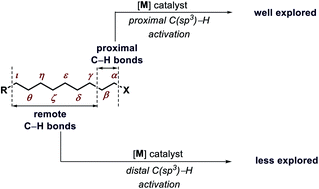
Chem. Sci., 2020,11, 10887-10909
https://doi.org/10.1039/D0SC04676K
From CO2 activation to catalytic reduction: a metal-free approach
This review article documents the key developments in the metal-free catalytic reduction of CO2 into various energy intensive chemicals and fuels, and reductive functionalization of CO2 for the formation of new C–N bonds.
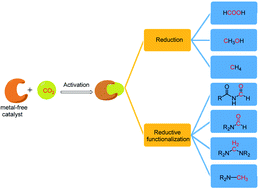
Chem. Sci., 2020,11, 10571-10593
https://doi.org/10.1039/D0SC03528A
Metal–organic framework gels and monoliths
This perspective links the synthesis of MOF Gels to the formation of MOF-monoliths and their resultant properties and application.
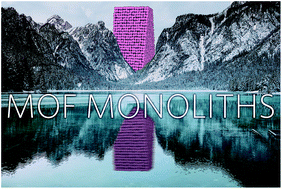
Chem. Sci., 2020,11, 310-323
https://doi.org/10.1039/C9SC04961D
Switching between mono and doubly reduced odd alternant hydrocarbon: designing a redox catalyst
A doubly reduced redox non-innocent phenalenyl based transition metal free catalyst has been designed and utilized in the development of the C–C cross coupling reaction through the activation of aryl halides at room temperature.
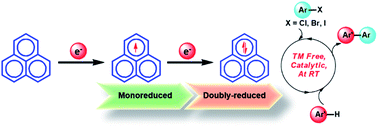
Chem. Sci., 2021,12, 3039-3049
https://doi.org/10.1039/D0SC05972B
Mechanistic insights into rhodium-catalyzed enantioselective allylic alkylation for quaternary stereogenic centers
The origin of high enantioselectivity in the formation of quaternary stereogenic carbon.
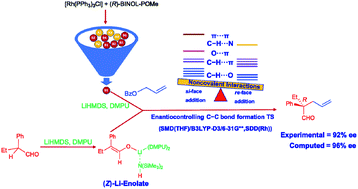
Chem. Sci., 2021,12, 2527-2539
https://doi.org/10.1039/D0SC04959J
Controlled synthesis of organic two-dimensional nanostructures via reaction-driven, cooperative supramolecular polymerization
We report the kinetically controlled supramolecular polymerization of organic two-dimensional charge-transfer nanostructures via a chemical reaction (imine)-driven approach.
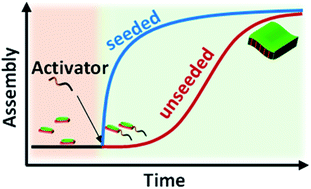
Chem. Sci., 2020,11, 12701-12709
https://doi.org/10.1039/D0SC02670K
A new pentacyclic pyrylium fluorescent probe that responds to pH imbalance during apoptosis
A modified Vilsmeier–Haack reaction resulted in the synthesis of a pyrylium based turn-on fluorescent pH probe. The probe can monitor minute acidification and dynamic pH variation in cells during apoptosis with therapeutic chemo drugs.
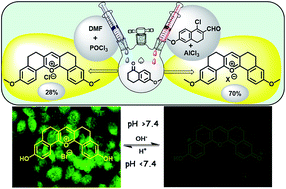
Chem. Sci., 2020,11, 12695-12700
https://doi.org/10.1039/D0SC02623A
A new route to porous metal–organic framework crystal–glass composites
A lower temperature route to metal–organic framework crystal–glass composites is presented. Specifically, the annealing pre-formed ZIF-62 glass with a crystalline MOF above Tg will enable formation of a greatly expanded range of materials.
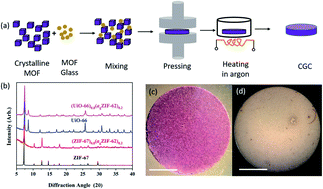
Chem. Sci., 2020,11, 9910-9918
https://doi.org/10.1039/D0SC04008H
A direct route to six and seven membered lactones via γ-C(sp3)–H activation: a simple protocol to build molecular complexity
Six and seven membered lactones have been synthesized directly from readily available aliphatic acids.
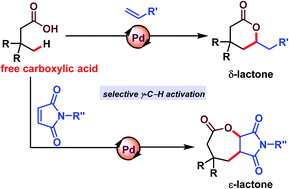
Chem. Sci., 2020,11, 9697-9702
https://doi.org/10.1039/D0SC03144E
Structure–activity relationships in well-defined conjugated oligomer photocatalysts for hydrogen production from water
Oligomer chain length and backbone twisting were found to have a strong effect on optoelectronic properties but a trimer of dibenzo[b,d]thiophene sulfone was found to have high photocatalytic activity approaching that of its polymer analogue.
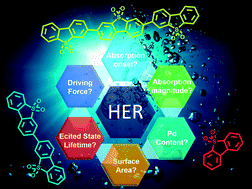
Chem. Sci., 2020,11, 8744-8756
https://doi.org/10.1039/D0SC02675A
Continuous and scalable synthesis of a porous organic cage by twin screw extrusion (TSE)
Twin screw extrusion (TSE) is demonstrated as an alternative synthetic method for preparing a prolific porous organic cage.

Chem. Sci., 2020,11, 6582-6589
https://doi.org/10.1039/D0SC01858A
Geometric landscapes for material discovery within energy–structure–function maps
We introduce a representation for the geometric features of the pores of porous molecular crystals. This representation provides a good basis for supervised (predict adsorption properties) and unsupervised (polymorph classification) tasks.
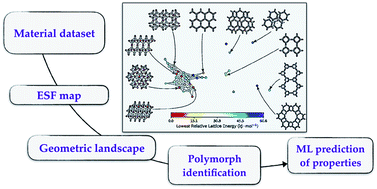
Chem. Sci., 2020,11, 5423-5433
https://doi.org/10.1039/D0SC00049C
Exploring long-range proton conduction, the conduction mechanism and inner hydration state of protein biopolymers
Post formation modification of protein-based materials can attenuate the proton conduction efficiency resulting from change in conduction mechanism, charge carrier mobility, carrier concentrations and inner hydration layer.
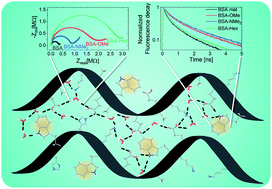
Chem. Sci., 2020,11, 3547-3556
https://doi.org/10.1039/C9SC04392F
Transition metal-free catalytic reduction of primary amides using an abnormal NHC based potassium complex: integrating nucleophilicity with Lewis acidic activation
An abnormal N-heterocyclic carbene (aNHC) based potassium complex was used as a transition metal-free catalyst for reduction of primary amides to corresponding primary amines under ambient conditions.
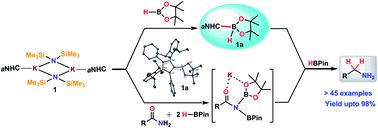
Chem. Sci., 2020,11, 1848-1854
https://doi.org/10.1039/C9SC05953A
A stable covalent organic framework for photocatalytic carbon dioxide reduction
A metal-decorated alkene-linked covalent organic framework is a robust, selective photocatalyst for CO2 reduction.

Chem. Sci., 2020,11, 543-550
https://doi.org/10.1039/C9SC03800K
Is silver a mere terminal oxidant in palladium catalyzed C–H bond activation reactions?
We disclose an intriguing and a potentially general role for one of the most commonly used silver salt additives whose molecular understanding continues to remain rather vague in the contemporary practice of palladium catalysis.

Chem. Sci., 2020,11, 208-216
https://doi.org/10.1039/C9SC04540F
Mining predicted crystal structure landscapes with high throughput crystallisation: old molecules, new insights
New crystal forms of two well-studied organic molecules are identified in a computationally targeted way, by combining structure prediction with a robotic crystallisation screen, including a ‘hidden’ porous polymorph of trimesic acid.
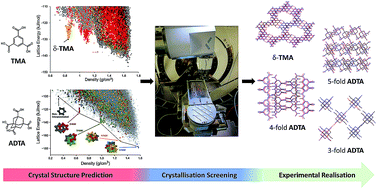
Chem. Sci., 2019,10, 9988-9997
https://doi.org/10.1039/C9SC02832C
Freeze the dynamicity: charge transfer complexation assisted control over the reaction pathway
Aqueous CT complexes of donor and acceptor molecules with reactive thiol groups were frozen and lyophilized to get alternate D–A assemblies in the solid state. Oxidation of the thiols resulted in asymmetric disulfides exclusively.

Chem. Sci., 2019,10, 10035-10039
https://doi.org/10.1039/C9SC03417J
Accelerated robotic discovery of type II porous liquids
High-throughput automation was used to streamline the synthesis, characterisation, and solubility testing, of new Type II porous liquids, accelerating their discovery.
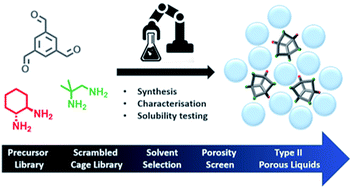
Chem. Sci., 2019,10, 9454-9465
https://doi.org/10.1039/C9SC03316E
Zinc ion interactions in a two-dimensional covalent organic framework based aqueous zinc ion battery
We have demonstrated a hydroquinone stitched β-ketoenamine COF acting as an efficient organic cathode in an aqueous rechargeable zinc ion battery.

Chem. Sci., 2019,10, 8889-8894
https://doi.org/10.1039/C9SC03052B
B(C6F5)3-catalyzed dehydrogenative cyclization of N-tosylhydrazones and anilines via a Lewis adduct: a combined experimental and computational investigation
Metal-free acceptorless-dehydrogenative cyclization of N-tosylhydrazones and aromatic amines produces both symmetrical and unsymmetrical 1,2,4-triazoles in high yields and selectivities.

Chem. Sci., 2019,10, 7964-7974
https://doi.org/10.1039/C9SC02492A
Organobase triggered controlled supramolecular ring opening polymerization and 2D assembly
Spontaneously aggregation of a carboxylic acid appended NDI can be retarted by intra-molecular H-bonding. With catalytic DMAP or DBU, the meta-stable monomer exhibits living supramolecular polymerization and generates ultra-thin 2D sheet.

Chem. Sci., 2019,10, 7345-7351
https://doi.org/10.1039/C9SC01972C
Rhodium catalyzed template-assisted distal para-C–H olefination
We report first example of template assisted rhodium catalyzed para-C–H alkenylation.

Chem. Sci., 2019,10, 7426-7432
https://doi.org/10.1039/C9SC01824G
Storing redox equivalent in the phenalenyl backbone towards catalytic multi-electron reduction
Redox equivalent storage in the phenalenyl backbone towards catalytic multi-electron reduction.
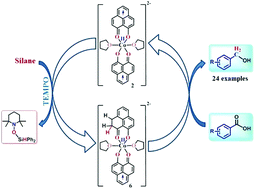
Chem. Sci., 2019,10, 7433-7441
https://doi.org/10.1039/C9SC02057H
Hypercoordinate iodine for catalytic asymmetric diamination of styrene: insights into the mechanism, role of solvent, and stereoinduction
Stereoselectivity in the asymmetric diamination of styrene catalyzed by chiral hypercoordinate iodine originates from the prochiral face recognition when the substrate binds to the catalyst.
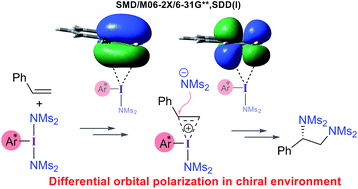
Chem. Sci., 2019,10, 7082-7090
https://doi.org/10.1039/C9SC01513B
Plasmonic colloidosomes of black gold for solar energy harvesting and hotspots directed catalysis for CO2 to fuel conversion
Plasmonic black gold converts CO2 to methane using solar energy.
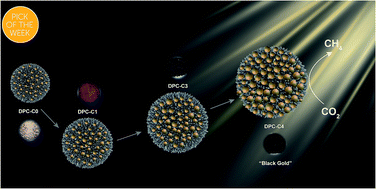
Chem. Sci., 2019,10, 6594-6603
https://doi.org/10.1039/C9SC02369K
Unusual confinement properties of a water insoluble small peptide hydrogel
A water insoluble peptide-hydrogel that shows unique compartmentalization by not allowing any exchange to and from the hydrogel and can protect enzymes from denaturation.
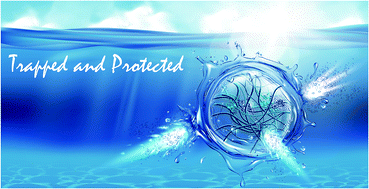
Chem. Sci., 2019,10, 5920-5928
https://doi.org/10.1039/C9SC01754B
Insights into the role of noncovalent interactions in distal functionalization of the aryl C(sp2)–H bond
How a series of noncovalent interactions (NCIs) determine the regiochemical outcome in a distal sp2 C–H functionalization reaction is presented.
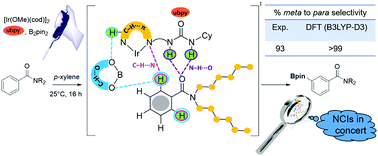
Chem. Sci., 2019,10, 3826-3835
https://doi.org/10.1039/C8SC05335A
Flux melting of metal–organic frameworks
We show flux melting by using a liquid MOF as a solvent for a secondary, non-melting MOF component.
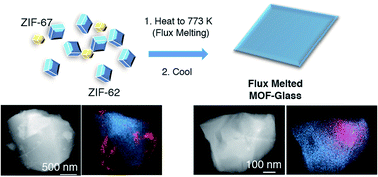
Chem. Sci., 2019,10, 3592-3601
https://doi.org/10.1039/C8SC04044C
Transforming atmospheric CO2 into alternative fuels: a metal-free approach under ambient conditions
The present work established the metal-free approach to capture CO2 from air and its reduction into alternative fuel under ambient conditions.
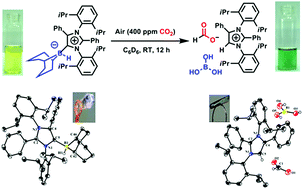
Chem. Sci., 2019,10, 1879-1884
https://doi.org/10.1039/C8SC03581D
Reduction of CO2 by a masked two-coordinate cobalt(I) complex and characterization of a proposed oxodicobalt(II) intermediate
The detailed mechanism of CO2 reduction by a cobalt(I) complex is investigated using computations and kinetics.
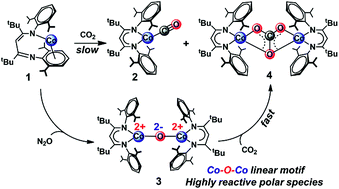
Chem. Sci., 2019,10, 918-929
https://doi.org/10.1039/C8SC02599A
Two chiral catalysts in action: insights into cooperativity and stereoselectivity in proline and cinchona-thiourea dual organocatalysis
Increasing use of two chiral catalysts in cooperative asymmetric catalysis in recent years raises some fundamental questions on chiral compatibility between the catalysts, modes of activation, and relative disposition of substrates within the chiral environment of the catalysts for effective asymmetric induction.
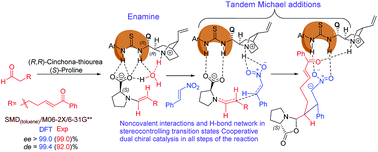
Chem. Sci., 2018,9, 8738-8747
https://doi.org/10.1039/C8SC03078B
Selective C–H halogenation over hydroxylation by non-heme iron(IV)-oxo
Synthetic non-heme iron-oxo and iron-halide complexes promote selective halogenation of the sp3-C–H bonds via hydrogen atom abstraction and halide rebound phenomenon.
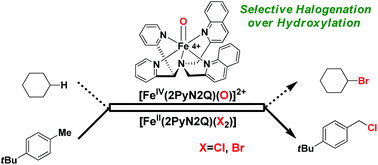
Chem. Sci., 2018,9, 7843-7858
https://doi.org/10.1039/C8SC02053A
Origin of stereoselectivity in the amination of alcohols using cooperative asymmetric dual catalysis involving chiral counter-ions
Transition state models are proposed for chiral counterion induced stereoselectivity in cooperative dual catalysis access to the amination of alcohols.
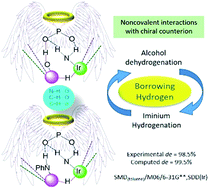
Chem. Sci., 2018,9, 6126-6133
https://doi.org/10.1039/C8SC01433G
Selective activation of organocatalysts by specific signals
Activation of the responsive organocatalyst proline by three different signals allows temporal control over chemical reaction kinetics.
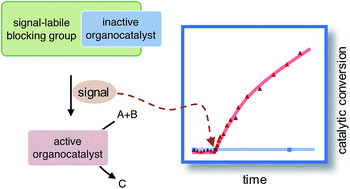
Chem. Sci., 2018,9, 5999-6005
https://doi.org/10.1039/C8SC02019A
Controlling destructive quantum interference in tunneling junctions comprising self-assembled monolayers via bond topology and functional groups
Three different benzodithiophene derivatives were designed to isolate the effects of bond topology from that of functional groups in quantum interference to examine the role of the quinone functionality separate from cross-conjugation.
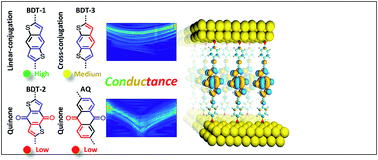
Chem. Sci., 2018,9, 4414-4423
https://doi.org/10.1039/C8SC00165K
Linking defects, hierarchical porosity generation and desalination performance in metal–organic frameworks
The composite membranes with defective metal–organic frameworks (MOFs) show a significant increase in water flux, without compromising the high salt rejection.

Chem. Sci., 2018,9, 3508-3516
https://doi.org/10.1039/C7SC05175A
Tuning the redox non-innocence of a phenalenyl ligand toward efficient nickel-assisted catalytic hydrosilylation
The hydrosilylation of olefins by a nickel(II) catalyst assisted by a redox non-innocent phenalenyl (PLY) ligand is reported.
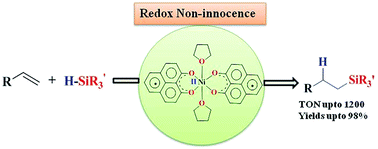
Chem. Sci., 2018,9, 2817-2825
https://doi.org/10.1039/C7SC04687A
About this collection
In December 2020, Chemical Science supported IISER Kolkata, India in hosting a Leaders in the Field Symposium, which showcased innovative chemistry research from both established and early career researchers in India. This specially curated collection includes recent Chemical Science articles authored by the presenters and organisers of the Leaders in the Field Symposium and as with all Chemical Science articles – they are all completely free to access and read. We hope you enjoy browsing through this collection.